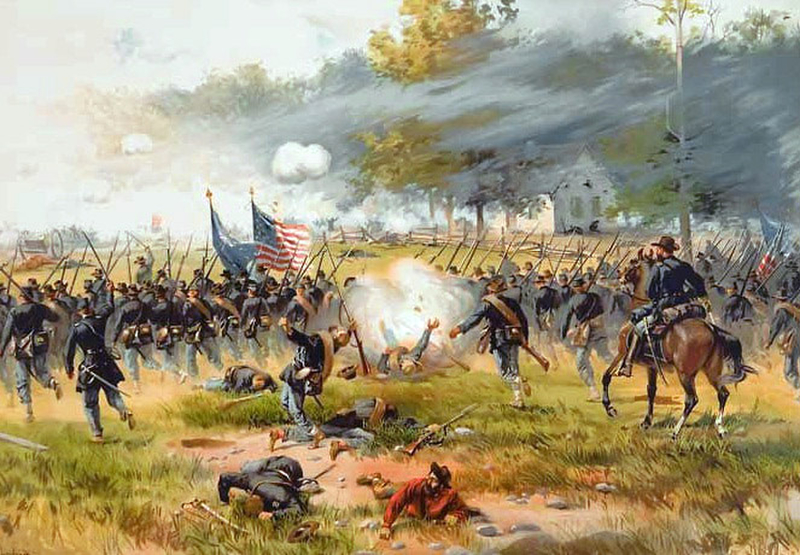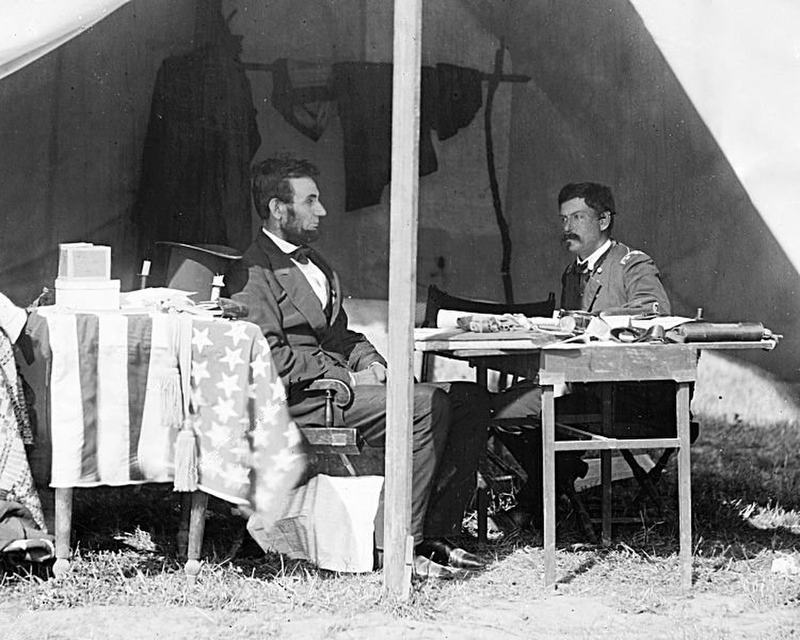I find visiting Civil War sites educational, interesting, and heartbreaking. I've been able to tour many sites, from Andersonville Prison to Gettysburg to The Battle Above the Clouds.
Each one is unique, whether it is the terrain, the timing, or the tactics involved. At each site there are counts of great bravery, military brilliance or the lack, and stories of great loss of life.
No place epitomizes all those things more for me than Antietam Battlefield. Also known as the Battle of Sharpsburg (Northern battles are often named after the closest body of water, i.e. Antietam Creek, while Southerners refer to battles by the closest town, in this case Sharpsburg, MD.) this mighty conflict happened across farms, outside a small town, along the banks of a beautiful meandering creek.
One of the earlier battles of the Civil War, Antietam is part of the Maryland Campaign and took place in September of 1862. Union troops under the command of Major General McClellan and Confederate troops under the command of General Lee clashed in the single bloodiest day of battle in American history.
 |
| The author's photo of The Dunker Church Antietam Battlefield |
Atop the highest point on the Antietam Battlefield stands a pristine white building, The Dunker Church. This little church became a landmark through the smoke and powder for soldiers to orient themselves. The church sits not far from "The Cornfield" the site of intense fighting in the morning hours of the battle. Stonewall Jackson and John Bell Hood held the Confederate lines and the Union suffered heavy casualties. Neither side seemed able to gain the upper hand, and one man described the clash as "Artillery Hell."
 |
| Photo via www.goodfreephotos.com Note the church in the background. |
By midday, the focus of battle had swung south from The Cornfield to the Sunken Road. The Irish Brigade (New York and Massachusetts Irish Americans) advanced upon Confederate troops who had taken up a position in a sunken farm road that made the perfect rifle pit. No fewer than eight times were the colors of the Irish Brigade struck down, but nine times they were taken up and carried forward. Men sacrificed their lives to rush a fence and tear it down rather than have the entire brigade take fire through being slowed by the barricade. The Irish Brigade advanced under heavy fire, living up to the Gaelic phrase written upon their regimental colors: “Riamh Nar Dhruid O Spairn lann”, “Who never retreated from the clash of spears”.
Eventually, the Irish Brigade was able to flank the sunken road, and rather than facing entrenched riflemen head-on, they were then able to shoot down the Sunken Road...so effectively that The Sunken Road became The Bloody Lane.
 |
| The author's view, looking north along The Sunken Road from the observation tower in the center of Antietam Battlefield. |
 |
| Author's photo of the Irish Brigade monument, near The Sunken Road Antietam Battlefield. |
 |
| Burnside...where we get the term "Sideburns." You can see why! |
 |
| Author's photo of Burnside Bridge (From the Confederate Side of Antietam Creek.) |
The battle was over by 5:30. When the smoke cleared and the guns fell silent, there were more than 22,000 casualties. The Federals lost 25% of their men, while the Confederates lost 31%. The dead and wounded littered the field, and it would take months for the dead to be buried. For years after...even to this day, the remains of soldiers are still being found, evidence of the battle resurfacing in the form of bullets, cannonballs, horseshoes, and more.
The battle was considered a tactical draw. So much loss, for not much gain.
In the aftermath of Antietam, however, President Abraham Lincoln issued The Emancipation Proclamation.
 |
| Lincoln visits General McClellan after the battle. www.goodfreephotos.com |
 Available NOW! Learn more HERE.
Available NOW! Learn more HERE.Dreams of Finding Mr. Right Go Wrong in the Old West
The Bride’s Dilemma by Susan Page Davis
Wyoming, 1883
Eve Martin arrives in Cheyenne to learn that man she came to marry is in jail, accused of a violent murder. Should she get on the next eastbound train, or has God brought her here to help save Caleb Blair’s life?
Romancing the Rancher by Linda Ford
Montana, 1886
Amelia expects a safe home for herself and her niece as mail-order bride to Zach Taggerty. Only Zach has never heard of her, and the last thing he needs is more complications in his life.
The Marriage Sham by Vickie McDonough
Texas, 1888
Mail-order bride Zola Bryant is devastated. Her newlywed husband is dead. But even worse, they were never truly married because the man who wed them was an outlaw not a preacher. What will she do now that her life and reputation are in tatters?
The Galway Girl by Erica Vetsch
Kansas, 1875
A mail-order mix-up sends Irish lass Maeve O’Reilly to the Swedish community of Lindsborg, Kansas. Will Kaspar Sandberg consider it a happy accident or a disaster to be rectified as soon as possible?

Best-selling, award-winning author Erica Vetsch loves Jesus, history, romance, and sports. She’s a transplanted Kansan now living in Minnesota, and she married her total opposite and soul mate! When she’s not writing fiction, she’s planning her next trip to a history museum and cheering on her Kansas Jayhawks and New Zealand All Blacks. You can connect with her at her website, www.ericavetsch.comwhere you can read about her books and sign up for her newsletter, and you can find her online at https://www.facebook.com/EricaVetschAuthor/ where she spends way too much time!


Wow! I always find stories of the Civil War heartbreaking. Any war is that, I know, but countryman against countryman. Thanks for the post!
ReplyDeleteConnie, it is very sobering to walk those battlefields. So much sorrow.
DeleteIt's so sad that so many lives were lost and people injured, and it was just a draw. Thanks for the reminder and for the interesting pictures.
ReplyDeleteVickie, visiting those sites has definitely changed me, my perspective on that war and others, and the need to remember, to honor the fallen.
DeleteI visited Antietam last year with Dave.... Gettysburg the year before. That stretch of RT 15 heading south is rife with history... and then I think about what those folks went through, and I am so glad it's over. Sorry it happened... but so glad it's over. A nation turned upon itself is a sorry sight.... And a heartbreak for so many.
ReplyDelete